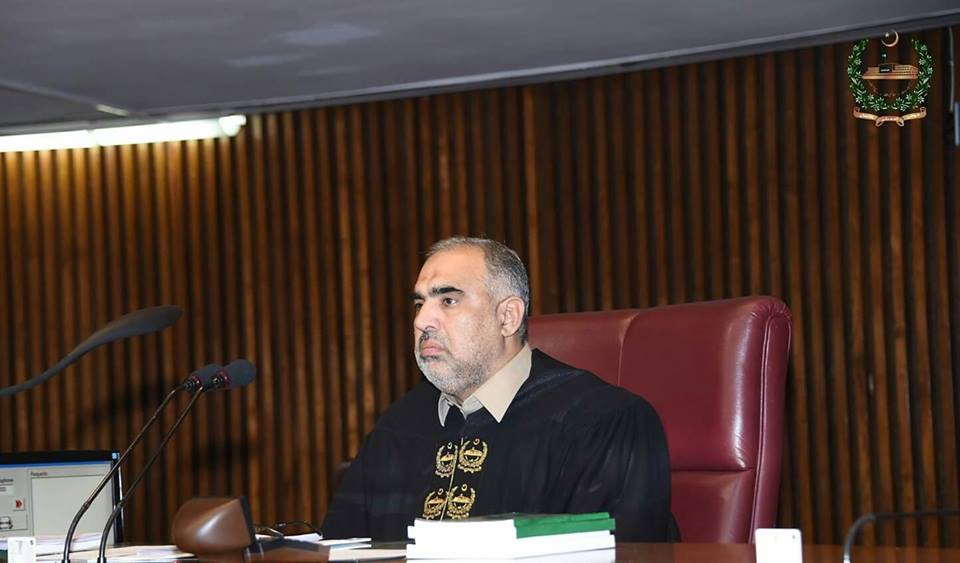مضمون کا ماخذ : resultados loteria ریو ڈی جنیرو
Plan ready to plant one billion mangroves trees in Sindh, Balochistan
A comprehensive initiative has been hammered out to massively boost area under mangroves plantation under the Prime Minister Imran Khan’s Ten Billion Tree Tsunami Programme (TBTTP), Special Assistant to Prime Minister Climate Change Malik Amin Aslam revealed. Talking to media here on Friday, the PM’s aide said, “An elaborate plan has been finalized in consultation […]
A comprehensive initiative has been hammered out to massively boost area under mangroves plantation under the Prime Minister Imran Khan’s Ten Billion Tree Tsunami Programme (TBTTP), Special Assistant to Prime Minister Climate Change Malik Amin Aslam revealed.
Talking to media here on Friday, the PM’s aide said, “An elaborate plan has been finalized in consultation with various national and international stakeholders to enhance mangroves forest cover in Balochistan and Sindh, where coastal areas and coastal communities are facing growing risks of climate change-caused risks, particularly cyclones, coastal erosion, sea-level rise and consequent intrusion of inland areas.”
He said that tackling existing challenges that affect man-made infrastructure and coastal ecosystems such as shoreline erosion, coastal flooding and water pollution, has already become a serious concern and challenge. Addressing the additional stress of climate change may require new approaches to managing land, water, waste, and ecosystems, Malik Amin Aslam highlighted. “However, an ambitious plan has been sketched out under which one billion mangrove trees would be planted in the coastal areas of the both provinces,” Malik Amin announced.
According to a study conducted by WWF – Pakistan, country’s mangroves cover spreads over 1463.59 km2, which would be increased manifold under the new initiative of one billion mangroves tree plantation plan rolled out as a part of the Prime Minister Imran Khan’s vision for Clean Green Pakistan as well as climate-smart Pakistan, he remarked.
Climate change can affect coastal areas in a variety of ways, he stressed.
The PM’s aide emphasised that climate change poses grave risks to coastal areas along over 1300 kms-long coastal strip covering Sindh and Balochisgtan provinces, which are already stressed by human activity, pollution, invasive species, and storms. Sea level rise could erode and inundate coastal ecosystems and eliminate wetlands. Warmer and more acidic oceans are likely to disrupt coastal and marine ecosystems.
Malik Amin said further that the country’s coasts have become increasingly vulnerable to sea-level rise, changes in the frequency and intensity of storms, increases in precipitation patterns and warmer ocean temperatures,”
Besides, rising atmospheric concentrations of carbon dioxide (CO2) have already started causing the warming ocean waters to absorb more of the gas and become more acidic. This rising acidity can have significant impacts on coastal and marine ecosystems, he warned.
“As a result, the adverse effects of climate change are most likely to worsen problems that the coastal areas in Sindh and Balochistan provinces already face, which are characterised by high-level of poverty, unemployment and mal-nutrition, if these areas are not protected with effective measures including mangroves plantation,” he warned.
Boosting mangroves tree cover with plantation of one billion mangroves saplings over next few years would help mitigate risks being faced by the coastal areas, its inhabitants and their livelihoods
Besides, blue carbon eco-system strategy has been finalised in consultation with the World Bank to conduct a detailed study of for assessment of carbon sequestration potential in the country.
Explaining about blue economy, he said that the blue economy is an emerging popular concept, which encompasses around protecting the oceans and sustainable use of natural resources including water =for sustainable growth and development.
The concept supports for sustainable usage of ocean resources for economic growth, social inclusion, and the preservation of livelihoods while at the same time ensuring environmental sustainability of the oceans and coastal areas as well as promotion of environmental-friendly activities including renewable energy, fisheries, maritime transport, coastal tourism, waste management and climate change risk management.
The coastal ecosystems of mangroves, tidal marshes, and seagrass meadows provide plenty of benefits and environmental services that are vital for climate change adaptation along coastlines, including protection from storms and sea level-rise, coastal erosion, coastal water quality contamination, provision of habitat for commercially important fisheries and endangered marine species and food security for many coastal communities.
“However, these vital ecosystems sequester and store significant amounts of coastal blue carbon from the atmosphere and ocean; which is why, these coastal ecosystems are now considered of unprecedented importance for their role in climate change mitigation,” Malik Amin Aslam emphasised.









